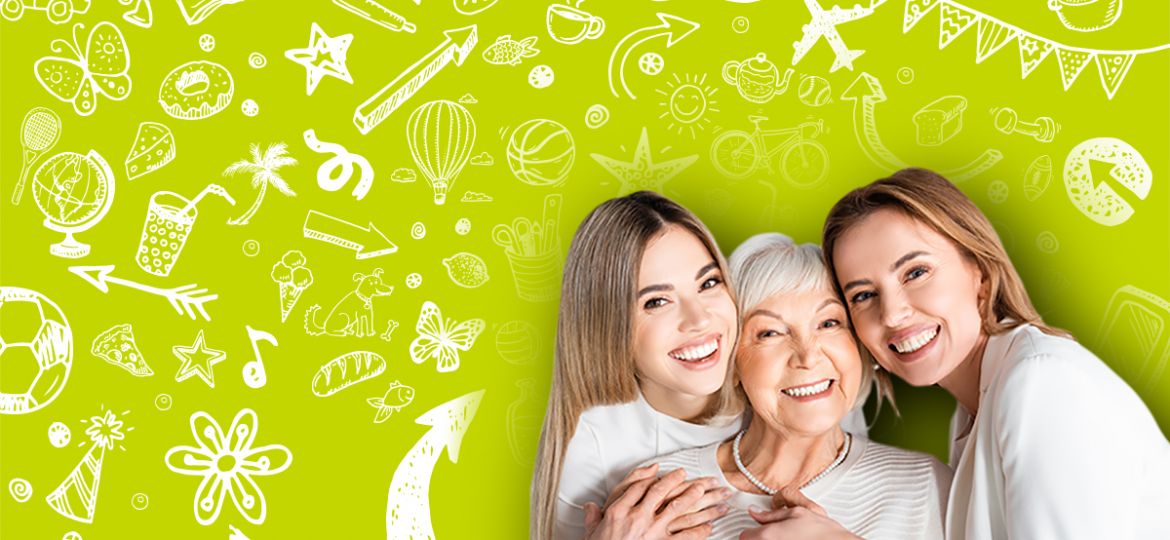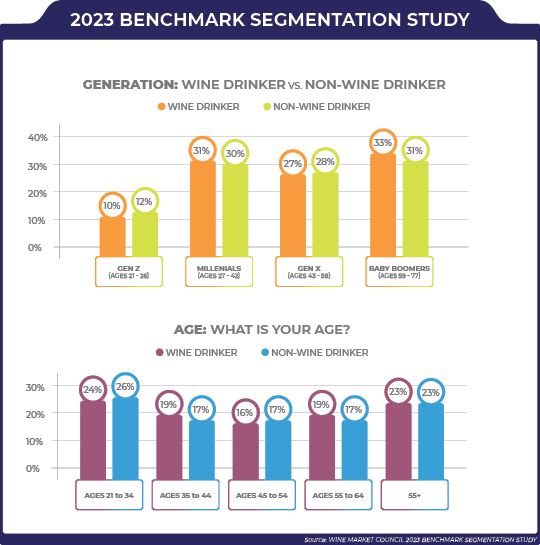
You Can’t Market to Everyone
Why Demographics Still Matter in Wine
At first glance, it may seem logical to take a broad approach to wine marketing—after all, shouldn’t the goal be to sell wine to anyone who’s willing to buy it?
Not exactly.
In practice, marketing to “everyone” is a fast track to appealing to no one. You water down your message, misfire your tactics, and wind up wasting both budget and energy trying to reach people who were never going to buy from you in the first place. Smart marketing is selective, not scattershot. And that’s where demographics come in.
At their core, demographics are just the quantifiable details about your customers—things like age, gender, income, education, and marital status. But in the hands of a capable marketer, demographics become strategic tools. They help decode how different consumers make decisions, what cultural cues they respond to, and how best to approach them with offers they’ll actually care about.
Wine, with all its history, nuance, and ritual, may be universally loved—but not uniformly understood. That’s why understanding the demographics of your audience is one of the most important investments a winery can make. Not in the abstract, but in the applied: how different generations buy, what they value, and how to speak their language.

Age Isn’t Just a Number—It’s a Strategy
Among all demographic variables, age remains one of the most predictive indicators of consumer behavior in the wine space. Your 67-year-old customer and your 27-year-old customer may both enjoy Chardonnay—but the stories, channels, and experiences that led them to that bottle couldn’t be more different.
So how do you use this knowledge?
You start by recognizing that each generation brings a unique set of preferences, priorities, and expectations to the table. These differences are shaped not just by age, but by shared cultural context—what technology they grew up with, how they were marketed to as teens, and how they define things like quality, authenticity, and value.
Here’s a breakdown of how different generations engage with wine—and what your winery should do about it.
The Silent Generation (Born 1928–1945): The Loyal Traditionalists
While their presence in the market is shrinking, their loyalty is unwavering. The Silent Generation prefers reliability over novelty and is far more likely to value a long-standing relationship with a winery than to chase the latest release.
They tend to gravitate toward established varietals, classic packaging, and consistent pricing. Most importantly, they still respond to print. Think newsletters, phone calls, and handwritten notes—not push notifications.
Action Step: Reinforce value and familiarity. Printed materials, bundled discounts, and a personal touch go a long way.
Baby Boomers (Born 1946–1964): The Experience-Driven Collectors
Boomers are the architects of modern wine culture in the U.S. They invented the wine tasting as vacation activity. They made critic scores a thing. They turned mailing lists into badge-worthy status symbols. For much of the past three decades, they were the ones buying the library vintages and signing up for vertical tastings with religious fervor.
But time changes habits. As they approach retirement, Boomers are buying less and moderating more. They still want quality and ritual—but they also want convenience and value.
Action Step: Focus on smaller format options, curated selections, and loyalty programs that emphasize connection over exclusivity. They still appreciate prestige—but they now appreciate sensible pricing just as much.
Generation X (Born 1965–1980): The Forgotten Powerhouses
Gen X is frequently left out of marketing conversations. This is a mistake.
Despite their smaller size, Gen Xers are in their peak earning years, and they value quality and reliability in their purchases. They’re skeptical by nature—raised in an era of economic uncertainty and cultural disillusionment—and they’re not easily swayed by flash or trend.
They also exist at the intersection of analog and digital. They read emails and engage with apps. They’re on social media, but they also like printed tasting notes. They’re pragmatic, fiercely independent, and allergic to anything that feels like a sales gimmick.
Action Step: Speak directly and respect their intelligence. Offer clear value, consistent product quality, and customer service that rewards loyalty without fluff. Combine digital convenience with occasional analog moments.
Millennials (Born 1981–1996): The Values-Driven Explorers
Millennials are the largest consumer cohort in U.S. history, and they’ve been quietly reshaping wine culture for years. Where Boomers sought status, Millennials seek alignment. They care less about Robert Parker scores and more about soil health. They want transparency, flexibility, and values that match their own.
They are also deeply influenced by visual storytelling. Experiences matter—but only if they’re worth posting. They prefer inclusive, approachable brands that make wine feel less like a secret society and more like a good party.
Action Step: Show your work. Be transparent about sourcing and sustainability. Ditch the formality and engage authentically on digital platforms. Offer flexible wine club options and behind-the-scenes storytelling. And yes, your label design matters—don’t let it look like a Word doc from 2003.
Generation Z (Born 1997–2012): The Unfiltered Futurists
Gen Z isn’t just digital-first—they’re digital-only. If your website isn’t optimized for mobile, if your online store takes more than five seconds to load, or if you’re still asking people to download PDFs to join your club… you’ve already lost them.
This generation values fun, flexibility, and visual relevance. They will try your wine if it appears in a trending video. They will buy it if the branding makes them feel something. But they won’t stay loyal unless you earn it—every time.
And they have no patience for old rules. They like slushies, canned wines, pet-nats, sweet reds, and anything that gets people together. They’re not here for tradition. They’re here for the moment.
Action Step: Prioritize mobile, visual storytelling, and interaction. Think sampler drops over verticals. Think memes over mailing lists. Your wine club should feel like a community, not a contract.
A Note on the Underage (for Now): Generation Alpha
Gen Alpha is still pre-legal-drinking-age, but they’re already influencing your customer base—through their Millennial parents. They’re the reason your tasting room has crayons and juice boxes now. And they’ll be of legal age by 2034.
Smart wineries are thinking ahead: creating family-friendly experiences, building tech infrastructure, and embracing sustainability initiatives now—so when Gen Alpha gets here, you’re already fluent in their expectations.
In Summary: Choose Your Audience Before You Choose Your Campaign
Marketing to everyone is marketing to no one. Demographics, and particularly generational cohorts, give you a powerful filter for your strategy. They tell you who your audience is, where they’re most comfortable, what they care about, and how to speak to them in a way that resonates.
So the next time someone says “our wine is for everyone,” feel free to politely disagree—and then ask them which generation actually signs the credit card slip.
P.S. This blog is based on decades of research, but we’ll never pretend it’s the final word. People are complex. Trends shift. If you’ve seen different behavior from your own customers or cracked the code on reaching Gen Z through interpretive dance and Instagram stickers, we’d love to hear it. Knowledge is meant to be shared—preferably over a glass of something interesting.


